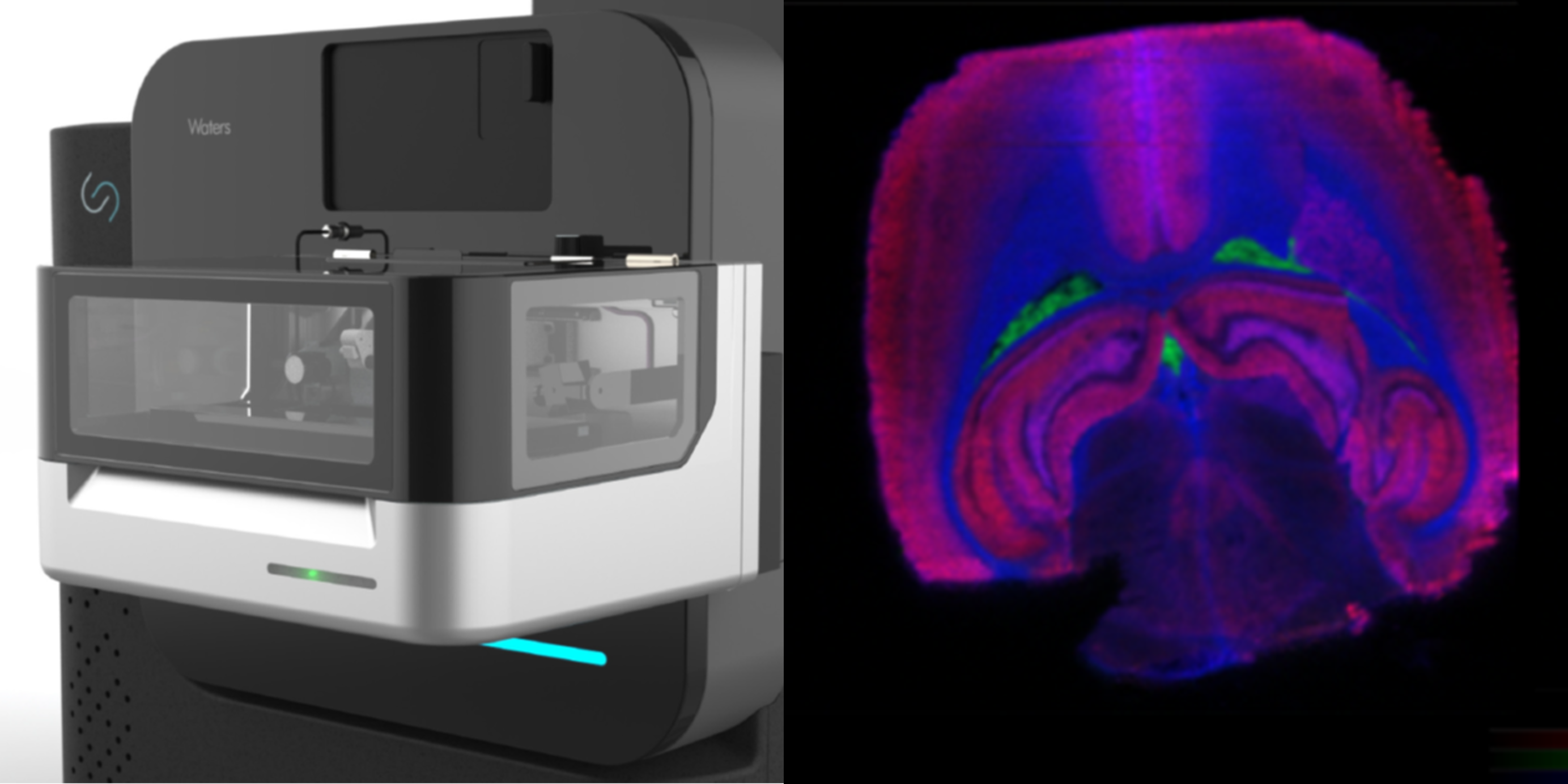The Network expands its technology ambitions with a new Multimodal Mass Spectrometry Imaging MRT Platform

Over the last two and a half years, the MRC National Mouse Genetics Network has established a novel paradigm in the use of mouse models of human disease to maximise positive outcomes in the clinic. It has done so through creating wide and deep synergies, both within and between clusters, that combine the expertise of clinicians and other scientists. and by extending an open invitation to patients and the public.
To achieve the very ambitious aims set out by our mission, technology is paramount, and the exploitation of technological innovation is a key aspect of our ability to increase the pace of discovery and provide the right solutions to the clinical challenges that we face.
Members of our Ageing, Cancer, Degron Tagging, Microbiome and Mitochondria Clusters, in collaboration with colleagues at the CRUK Scotland Institute in Glasgow, identified an area of significant overlapping need and development potential. They submitted a successful bid to the Medical Research Council for a new Multimodal Mass Spectrometry Imaging (MSI) multi-reflecting time-of-flight (MRT) Platform.
This will allow the teams to finally delve into the spatial metabolomics area, a new and innovative field focused on the in situ mapping of small molecules—such as metabolites, lipids and drugs—in tissues and organs, allowing a deeper understanding of the biological context in which molecules perform their roles.
This particular piece of equipment can uniquely perform spatial metabolomics with two complementary techniques, matrix assisted laser desorption ionisation (MALDI) and desorption electrospray ionisation (DESI), allowing for the measurement of the widest possible breadth of metabolites on the same instrument. It will also act in synergy with other spatially resolved technologies already present at the CRUK Scotland Institute. Spatial analysis of metabolite distribution is a necessity to understand metabolic heterogeneity in complex tissues in both health and disease, and to ultimately unravel metabolic signatures associated with different cell populations.
Members of the Network across more than 20 UK universities and institutes will have access to this new equipment at the CRUK Scotland Institute, maximising the value for money of the MRC’s investment.
The application was led by Karen Blyth (Cancer Cluster co-lead) and David Sumpton (Head of the Metabolomics Facility at the CRUK Scotland Institute), with the contribution of Owen Sansom as project co-lead, but includes work packages from the Cancer, Ageing, Mitochondria, Microbiome and Degron Tagging Clusters from the outset, with future applicability for the entire Network and full commitment from all cluster leads.
We are delighted that this application was successful, and we are looking forward to starting the work!
Karen Blyth (bid co-lead) says: “We are really excited about the unique opportunities that the MSI platform will give the Cancer Cluster and researchers at CRUK Scotland Institute to provide a better understanding of the complexity of key cancers such as bowel and pancreatic cancer and dissect how tumours cleverly adapt to resist current therapies. With this technology, we can identify novel vulnerabilities in tumours, which will lead to improved treatments for patients.”
David Sumpton (bid co-lead) says:” This new and exciting technology will revolutionise our current capability, bringing spatial context to our metabolomics studies for the first time, allowing us to measure metabolism in situ. Metabolic heterogeneity, for example in the tumour microenvironment, is critical to consider when studying biological processes with importance to cancer. Therefore, MSI has the potential to provide a transformative and novel perspective to the research carried out by the NMGN.”
Owen Sansom (Director of the MRC NMGN) says:” It is a great achievement of the Network to have brought together members of so many of our clusters to make a collective funding application. Hosting this state-of-the-art instrument and making it available to the Network community of over 60 principal investigators across the UK will add significant value to the organisation as a national leader in the development and application of innovative technologies and the advancement of preclinical research.”
Images courtesy of Waters. Equipment and DESI image of a mouse brain section overlaying three lipids putatively identified as PS(40:6) red, PS(38:4) green and PE(38:4) blue